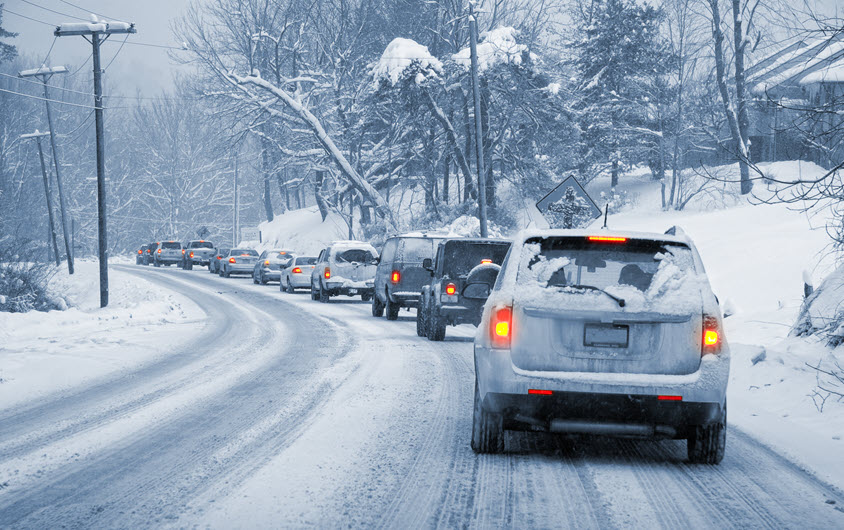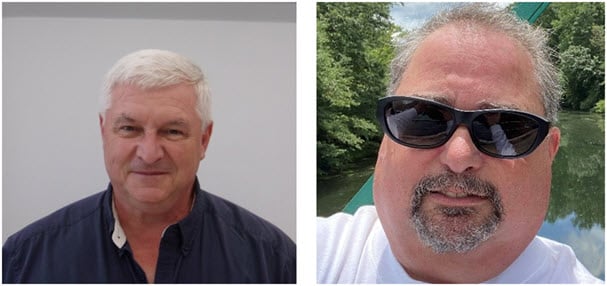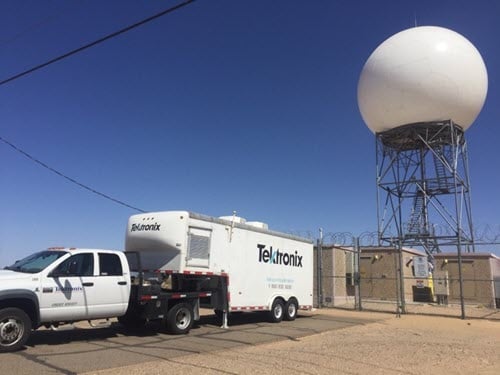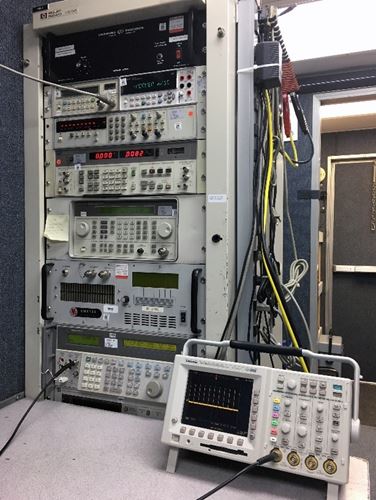

A hurricane. A blizzard. Driving rain. So much of life depends on the weather. Accurate forecasts can literally save lives, and the National Weather Service counts on Tektronix equipment and calibration to be sure their forecasting technology is constantly up to date.
Tektronix mobile service operation calibration technicians travel roughly 270 days a year to keep National Weather Service Doppler radar locations up and running in every corner of the country.

Two Tektronix service representatives, Steve Rosichan and Ron Meinhart
Based in Nashville, Tennessee, Steve Rosichan has been part of this team for more than 20 years – most of them spent on the road, driving a mobile test-site to nearly every state in the union. By calibrating National Weather Service radar equipment, his work is essential to the weather alerts that pop up on your phone.

A Tektronix mobile service technician truck outside a National Weather Service station in Yuma, Ariz.
“If what we do doesn’t work, then things start falling apart. We have to do a good job because there’s a real possibility that someone’s life depends on it,” Steve says. “Looking back over my career and thinking about what I’ve accomplished on the job is rewarding.” Recently promoted to manage the traveling team, Steve now hits the road a little less, using his experience to help support three other traveling technicians.
The National Weather Service (NWS) has weather radars networked all over the country at more than 100 locations. They provide the data that enables local officials and media to warn residents of incoming hazardous weather, from blizzards and hurricanes to tornadoes and heatwaves. Every radar has at least 30 pieces of mostly electrical equipment that Tektronix service engineers inspect and calibrate to ensure the radar output data is reliable.

A rack of low-frequency testing equipment inside on of the team’s trucks, including a multi-function calibrator, signal generator, distortion analyzer, multimeter, and frequency counter
In many cases, calibration technicians are only responsible for one category of equipment. The Tektronix team doesn’t have that luxury. Each technician has to calibrate multimeters, spectrum analyzers, oscilloscopes, power supplies, signal generators, insulation and oil breakdown testers among other equipment. They do it all by themselves with only the equipment they bring in their 27-foot Tektronix trailer. Each location can have 35 to 100 different pieces of equipment to be calibrated, work the technicians often have less than two days to complete before they’re expected at their next station.
“There’s not a lot of slack in our schedule,” says Ron Meinhart, who has been a part of the team for over seven years. “There’s a lot of things that can go wrong with the work that we do. That can make keeping the tight schedule a challenge.”
“On a normal two weeks, I’m gone 11 days,” says Ron, who lives in Mascoutah, Ill (when he’s there). “On a three-week cycle, I’m gone 17 days.”
All the travel can put a lot of stress on family life. Steve has seen a lot of technicians come and go after experience the toll of the grueling schedule.
“Getting used to being alone is a big challenge. You’re out on the road for 10 nights in hotels, by yourself, with no friendly faces to talk to,” Steve says. “The people you see, you only see once a year. Now with cell phones, it’s a bit easier. When I started there was no such thing.”
Despite the challenges, the travel does have its benefits. One of Ron’s trips brought him close to Las Vegas, where his wife joined him for the weekend. And one summer Steve’s family caravanned with him for six weeks – his wife and three kids following the Tek trailer in their family car for some 8,000 miles and 10 states.
“I’ve seen Mt. Rushmore, Carlsbad Caverns, beautiful places,” says Ron. “If you’re in a nice location for a weekend, you get to see some amazing things.”
In some areas of the country, extreme weather makes the job especially difficult. Ron says on one of his trips to Minnesota last year it was minus-70 degrees (-56 Celsius). There’s also been days well above 100 degrees.
“I had a truck burn up on me going from San Diego to Arizona. As I was going through the mountains my truck caught on fire. I spent six hours in 106-degree weather waiting for a tow truck,” Ron says.
“There’s very few people who would want to do what we do,” Steve says, at home in Nashville. “It’s a hard job. It’s hard to be away from your family, but at the same time it’s very rewarding.”
The traveling technicians who solely focus on the weather stations are part of Tektronix’s more-than-100 -person global service and support organization, which calibrates and services all equipment, even if it is not from Tektronix.
“The dedication that this team has shown mile after mile, state after state, is beyond amazing to me,” says Corey Christmann, vice president of service. “They don’t just calibrate sensitive equipment, they connect and build trust with our customers. In the case of the National Weather Service, that trust extends to all the people who depend on their weather forecasts, too.”


